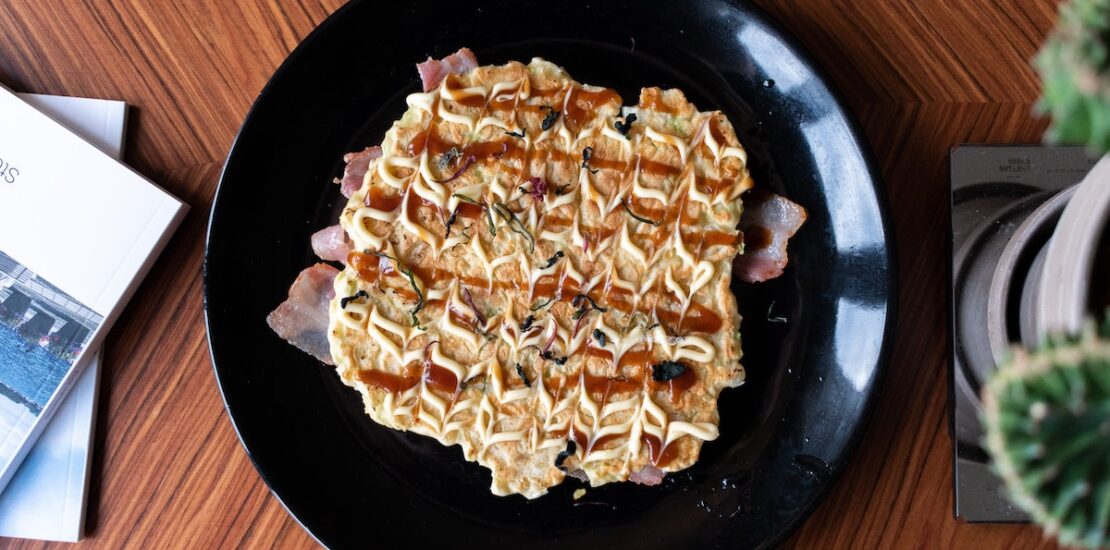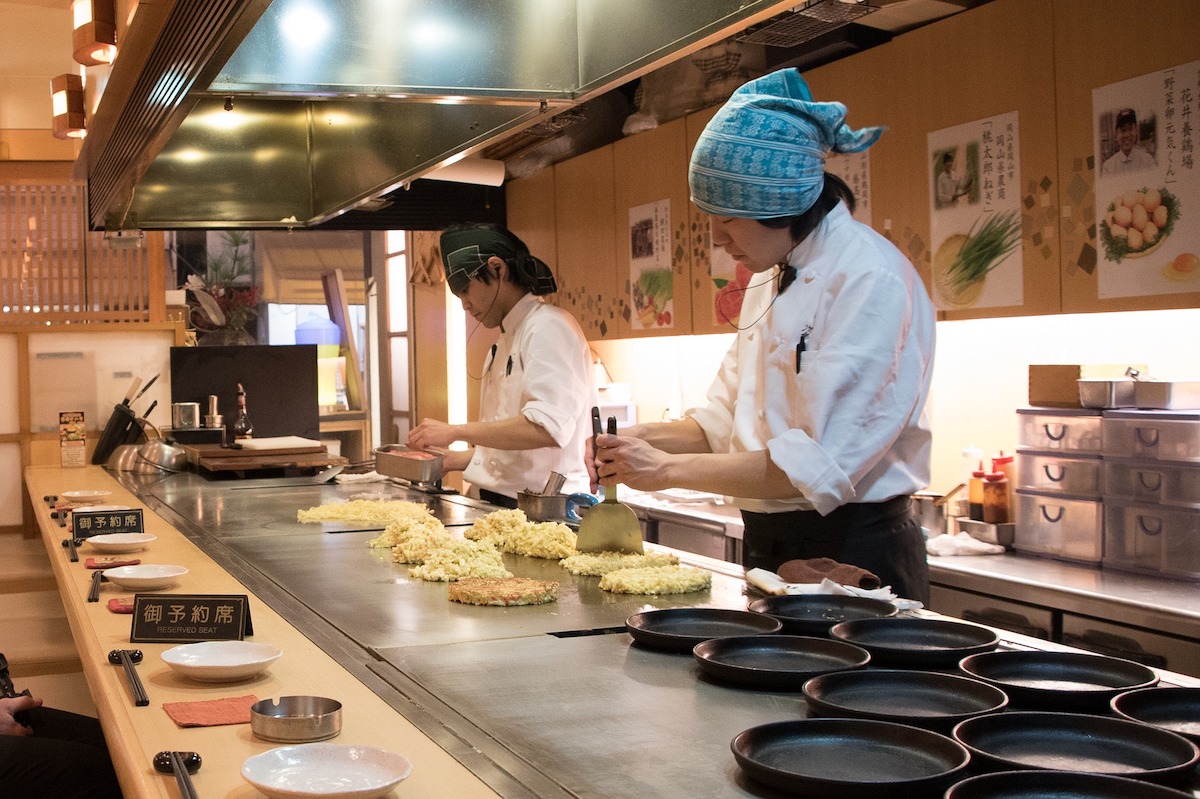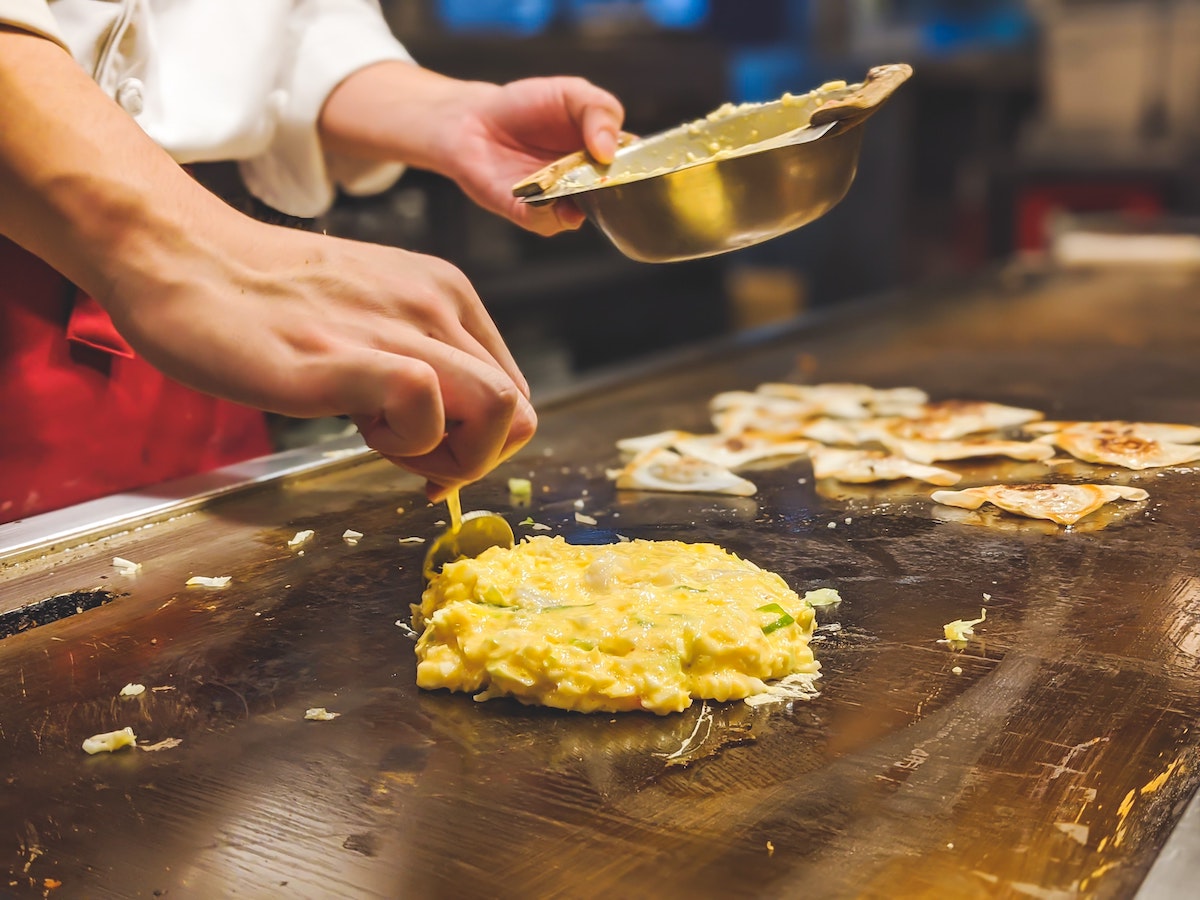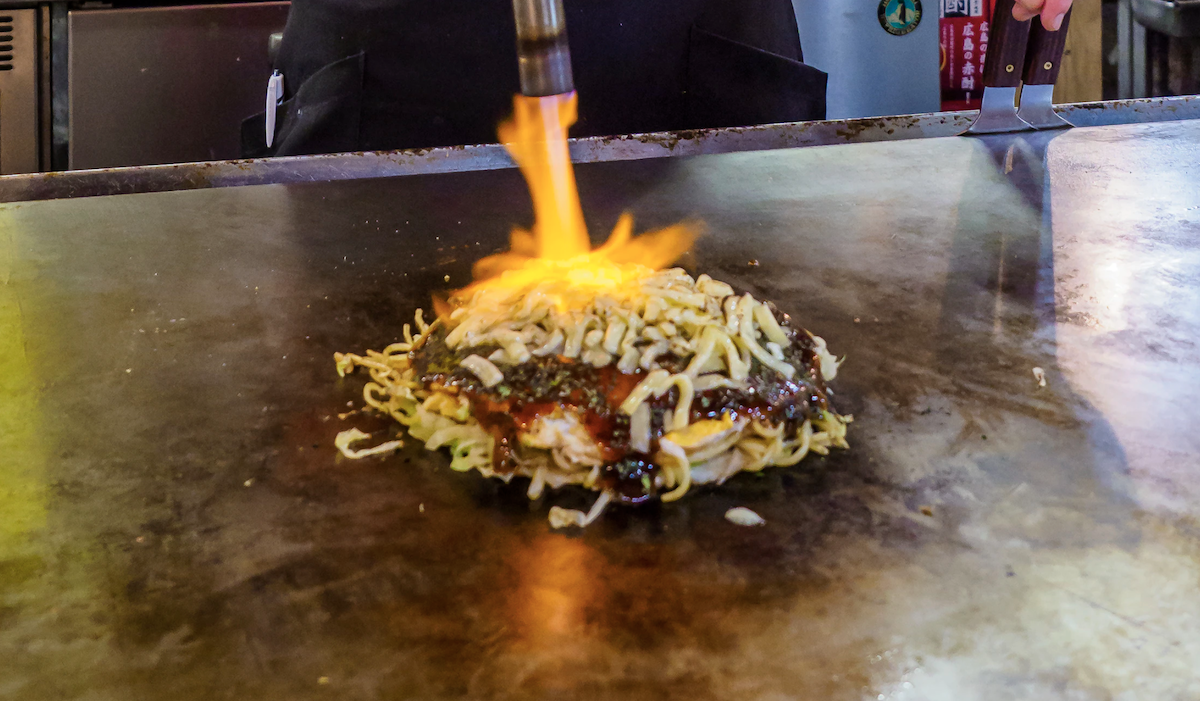It’s delicious, savory, and open to all sorts of alterations – the okonomiyaki is a casual comfort food worth trying. You’d be surprised how easy it is to make, too!

You can call it the Japanese pancake or pizza – okonomiyaki is a scrumptious meal that can be created to suit your palette. Let’s take a look at the history of this dish, its variations, and a few recipes on how to make it at home.
A dish filled with history
The history behind the okonomiyaki goes all the way back to the Edo period (1683-1868) when the dish was served as a special dessert at Buddhist ceremonies. It was called funoyaki, which literally means “cooked wheat bread.” The dough is rolled thin before lightly toasted and topped with miso paste and sugar.
Funoyaki was a popular tea-time snack before transforming into sukesoyaki during the Meiji period (1868-1912). The miso paste was replaced by sweet bean paste. Then in the 1920s, the recipe became known as yoshokuyaki and included more sauces. It was in the late 1930s when a restaurant in Osaka officially called the dish okonomiyaki; the word “okonomi” meaning “how you like” or “what you like.” It was an apt name to a recipe that leaves the toppings to the consumer’s imagination. Since both the funoyaki and okonomiyaki dishes were created in Osaka, the modern-day version is proudly owned by Osakians.
During World War II, locals took advantage of the “okonomi” concept of the recipe and used wheat, eggs, pork, and cabbage to create the hearty meal at a time when rice and other food sources were scarce. This is the version that is more closely related to the modern version of the dish.

Main okonomiyaki variations
There are two main variations of okonomiyaki, originating from Osaka and Hiroshima. Osaka’s version is the most popular okonomiyaki version that is known all over the world. It features a batter inclusive of all sorts of ingredients such as octopus, cabbage, and pork. The batter is then grilled on both sides and topped with katsuobushi (bonito flakes), mayonnaise, and aonori (seaweed flakes).
On the other hand, the main difference with the Hiroshima version is preparation, wherein the batter is grilled first before other ingredients are layered on top. You usually start with cabbage, acting as the bed for the other toppings. The okonomiyaki is then flipped over onto fried eggs. You can choose to do this on one or both sides before serving. The Hiroshima version also often includes fried noodles in the recipe.
Other noteworthy okonomiyaki variations
Tokyo’s okonomiyaki is called Monjayaki. The main ingredients like cabbage, bean sprouts, and scallions are grilled first to soften them fully. Then you pour in the batter in the middle. This version tends to be runnier than its counterparts. You also consume it off the grill using an okonomiyaki spatula. Another version is the negiyaki, which features negi, or green onions as the main topping instead of cabbage. This goes very close to the Korean pancake or pajeon.

Hungry yet? Here are tried and tested recipes of the Osaka and Hiroshima style okonomiyaki.
Osaka style okonomiyaki:
Ingredients:
- 200ml purified water
- 1 tsp konbu dashi stock powder (powder from kelp seaweed, used for rich umami flavor)
- 160 g all-purpose flour
- 4 eggs
- ¼ tsp salt
- ¼ tsp white sugar
- 480 g finely chopped cabbage
- 40 g chopped green shallots
- 40 g tenkasu (crunchy bits of deep-fried flour batter) (used for extra crunch and texture)
- 160 g thinly sliced pork
- Garnish: bonito flakes, aonori, pickled red ginger (beni shoga), mayonnaise (you can use other ingredients, too!)
- 1 tbsp olive oil
- ¼ cup okonomiyaki sauce (4 tbsp ketchup, 3 ½ tbsp Worcestershire sauce, 2 tbsp oyster sauce, 1 ½+ tbsp sugar) (you can also purchase this at local supermarkets)
Instructions:
- Prepare the dashi powder into stock by pouring it into the boiling water and mixing until dissolved
- Mix the flour, salt, and sugar in a bowl and mix in the dashi stock
- Segregate the cabbage, shallots, and tenkasu into four bowls and add one egg each into the bowl
- Add ¼ of the dashi mixture into each bowl and mix well
- Heat a pan and pour in mixture one bowl at a time, spreading to about 2 cm thickness
- Decorate your pancake with the pork and bonito flakes
- When the edges of the okonomiyaki are firm, flip over using two spatulas
- Cover the pan and cook for a few minutes
- Turn the okonomiyaki over and plate, adding your garnishes to finish
Servings: 4
Preparation time: 15 minutes
Cook time: 10 minutes

Hiroshima style okonomiyaki
Ingredients:
- 150 ml purified water
- 1 tsp mirin (a sweeter version of sake with less alcohol content)
- 100 g all-purpose flour
- 240 g finely chopped cabbage
- 1 green onion/scallion chopped
- 60 g bean sprouts
- 4 tbsp tenkasu
- 80 g thinly sliced pork
- 2 servings yakisoba noodles
- 2 eggs
- Garnish: bonito flakes (powder), aonori, picked red ginger (beni shoga), mayonnaise
- Okonomiyaki sauce (see above for recipe)
Instructions:
- Combine water and mirin in a bowl and whisk in flour
- Chill the mixture in the fridge for at least until for extra smoothness
- Pour in about ¼ cup of batter onto a hot griddle or pan and swirl from the center to thin out into crepe-like consistency
- Sprinkle your bonito flakes and place cabbage
- Add tenkasu, scallions, and bean sprouts
- Add other toppings and place pork on top
- Pour about 1 tbsp of batter on top to glue the ingredients
- Flip to cook the meat without pressing down on the okonomiyaki
- When the pork is cooked, set aside
- Stir fry noodles until shiny
- Add okonomi sauce over noodles and form the noodles into a round shape about the size of the pancake
- Transfer the okonomiyaki over the noodles
- Fry an egg into the same size as the okonomiyaki
- Before fully cooked, transfer the okonomiyaki and noodles over the egg
- Flip the three-layered okonomiyaki once and garnish
Servings: 2
Preparation time: 10 minutes
Waiting time: 1 hour
Cook time: 20 minutes
And there you have it. Two classic comfort food that never fails to make the stomach happy. You no longer need to go to a restaurant to have them because you can make your version of the okonomiyaki at home!



